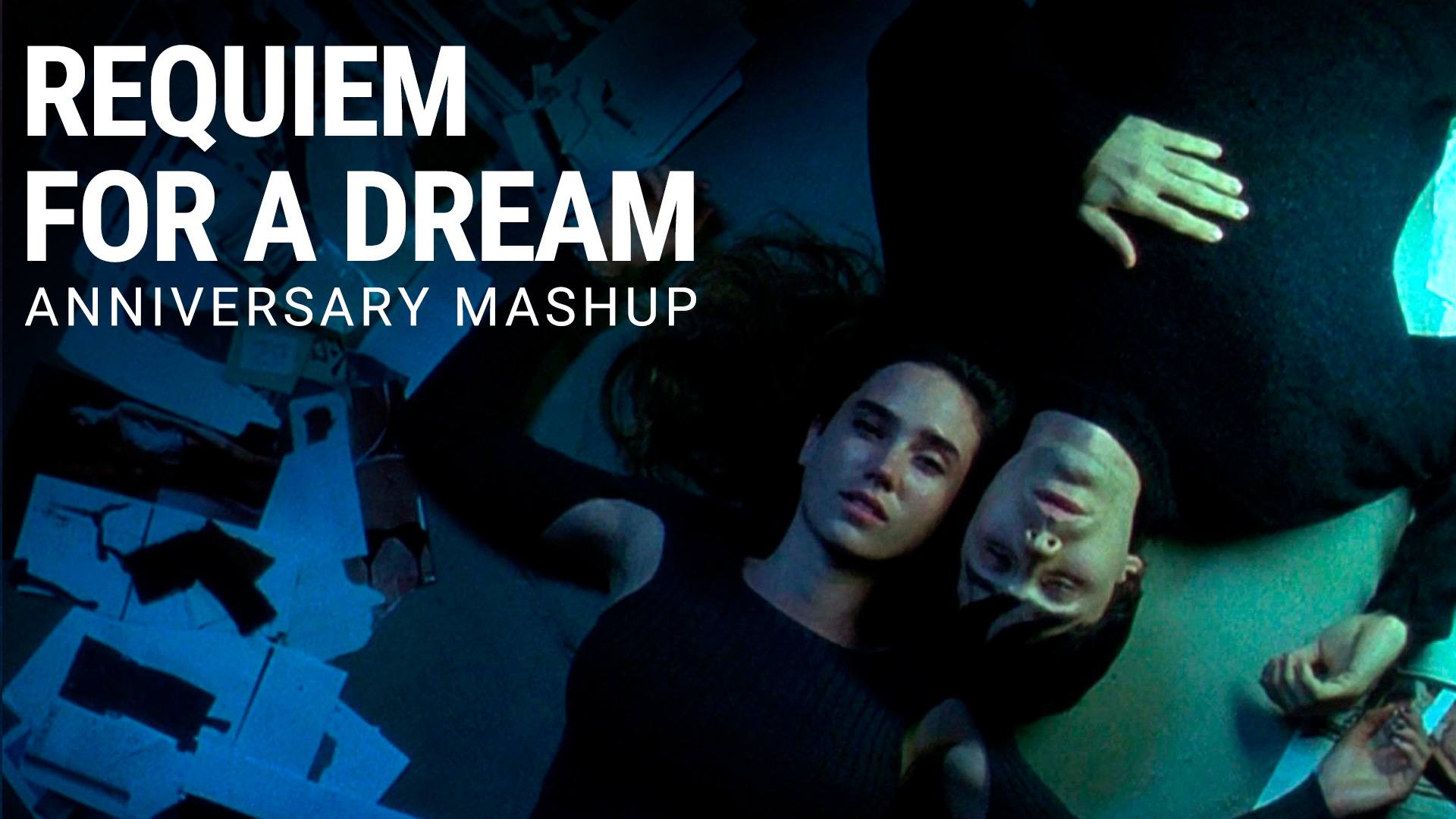Requiem for a Dream (2000)

“Requiem for a Dream,” directed by Darren Aronofsky and based on the novel by Hubert Selby Jr., stands as a haunting and visceral portrayal of addiction, desperation, and the relentless pursuit of dreams. Released in 2000, the film remains a powerful exploration of human frailty and the destructive consequences of unchecked ambition in the face of societal pressures.

Set against the backdrop of a gritty Brooklyn neighborhood, “Requiem for a Dream” delves into the lives of four interconnected characters whose dreams unravel amidst the throes of addiction. Harry Goldfarb (played by Jared Leto), his girlfriend Marion Silver (Jennifer Connelly), his friend Tyrone C. Love (Marlon Wayans), and his mother Sara Goldfarb (Ellen Burstyn) each navigate their own path of self-destruction fueled by drugs, illusions of fame, and a longing for fulfillment.

From its opening sequences, Aronofsky immerses viewers in a world of stark contrasts and emotional turmoil. The film’s frenetic editing, evocative cinematography by Matthew Libatique, and haunting score by Clint Mansell create an atmosphere of escalating tension and impending tragedy. As the characters spiral deeper into addiction, their lives become increasingly fragmented, mirroring the shattered dreams and fractured realities they inhabit.

Thematically, “Requiem for a Dream” explores the allure and devastation of addiction, shedding light on the psychological and physical toll it exacts on individuals and their relationships. Harry, Marion, and Tyrone’s pursuit of the ultimate high leads them down a path of deception, betrayal, and despair, as they sacrifice their morals and sanity in a desperate bid to escape their circumstances. Sara’s journey, on the other hand, explores the vulnerability of an older woman whose obsession with fitting into a red dress for a television appearance drives her into the dangerous world of prescription drug abuse.
Central to the film’s narrative is its unflinching portrayal of human frailty and the consequences of pursuing dreams at any cost. Jared Leto delivers a poignant performance as Harry, capturing the character’s charisma and vulnerability as he succumbs to the allure of heroin. Jennifer Connelly’s portrayal of Marion is equally compelling, showcasing her transformation from a hopeful artist into a disillusioned addict trapped in a cycle of degradation. Marlon Wayans brings depth to Tyrone, depicting his struggles with identity and loyalty amidst the temptations of drug trafficking.

However, it is Ellen Burstyn’s portrayal of Sara Goldfarb that stands out as a tour de force performance. Burstyn inhabits the role of a lonely widow whose desire for validation and connection leads her into a nightmare of addiction and delusion. Her descent into madness is both heartbreaking and harrowing, serving as a poignant commentary on the pressures faced by women in a society obsessed with youth and appearance.

“Requiem for a Dream” also employs innovative filmmaking techniques to immerse viewers in the characters’ psychological turmoil. Aronofsky’s use of rapid montages, split screens, and hallucinatory imagery intensifies the sensory experience, offering glimpses into the characters’ distorted perceptions and fractured realities.
Thematically, the film delves into broader societal issues such as the commodification of dreams, the exploitation of vulnerable populations by pharmaceutical industries, and the impact of addiction on communities and families. By juxtaposing moments of euphoria with gut-wrenching despair, Aronofsky challenges viewers to confront the uncomfortable truths about addiction and the human capacity for self-destruction.

In conclusion, “Requiem for a Dream” (2000) stands as a harrowing and uncompromising exploration of addiction, desperation, and the relentless pursuit of dreams. Through its raw performances, innovative filmmaking techniques, and provocative themes, Darren Aronofsky’s film leaves an indelible impression, serving as both a cautionary tale and a profound meditation on the fragility of human aspirations and the consequences of losing oneself in the pursuit of an elusive ideal.











